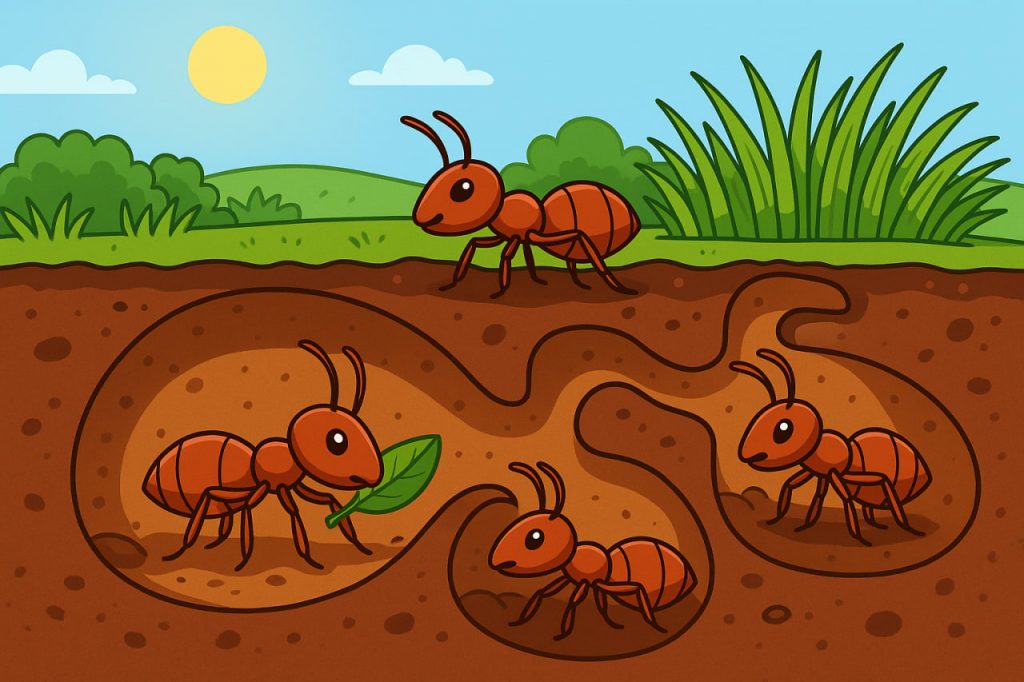Ants are among the most organized and industrious creatures on Earth. Despite their size, they create complex colonies that can house millions of individuals. Each ant plays a specific role in a highly efficient society built around teamwork, communication, and engineering.
Structure of an Ant Colony
An ant colony is much more than just a nest—it’s a self-sustaining city. The colony includes:
- The Queen – The egg-laying mother of all ants in the colony
- Workers – Sterile females that build tunnels, collect food, care for young, and defend the nest
- Soldiers – Larger workers that protect the colony from predators
- Drones (males) – Only needed briefly for mating and then die
The queen is usually the only ant that reproduces, while the others support colony survival.
How Ants Build Their Homes
Ant nests are often underground but can also be found in wood, trees, or even walls. Their construction involves:
- Digging tunnels and chambers with their mandibles
- Using saliva and soil to reinforce walls and structure
- Designing specialized rooms for nurseries, food storage, and even trash
- Ventilation systems that regulate air and temperature naturally
- Multiple entrances and exits for safety and traffic flow
Some tropical ant nests can go several meters deep and cover huge surface areas.
Communication: The Secret to Coordination
Ants don’t talk—they use chemical signals called pheromones. These signals allow them to:
- Mark trails to food sources
- Alert others of danger
- Identify members of their colony
- Coordinate construction and care of the nest
This chemical communication allows thousands of ants to act as one super-organism.
Expansion and Survival
When a colony grows too large, ants may:
- Build satellite nests nearby
- Send out a new queen with male drones to start a new colony
- Defend territory fiercely from rival colonies or predators
Some ants, like leafcutter ants, even farm fungi, using cut leaves as compost to grow food underground.
Fun Facts About Ant Colonies
- Argentine ants form a “supercolony” that stretches thousands of kilometers
- Some ants can float during floods by forming living rafts
- Army ants are nomadic and form temporary nests with their own bodies
- Some species enslave other ants, forcing them to work in their colonies
Each colony is a marvel of natural engineering and cooperation.
Glossary
- Pheromones – Chemicals used by ants to communicate
- Mandibles – Jaw-like mouthparts ants use to dig and carry
- Colony – A large group of ants working as one social unit
- Queen – The reproductive female that lays all eggs
- Leafcutter ant – A species that farms fungus as its main food source


